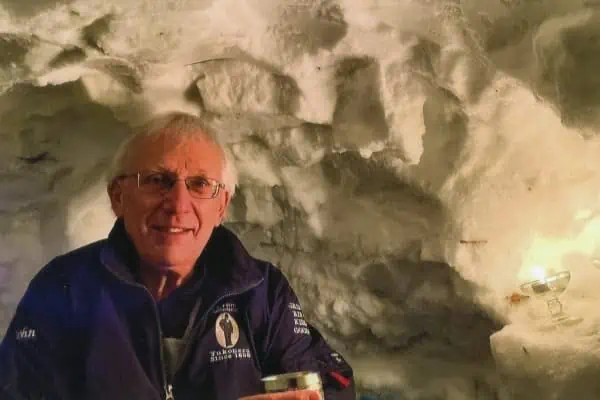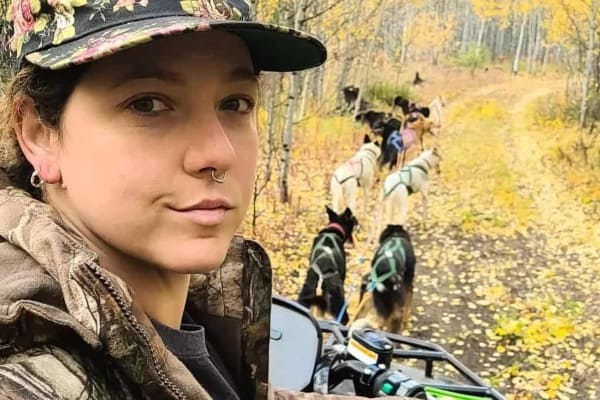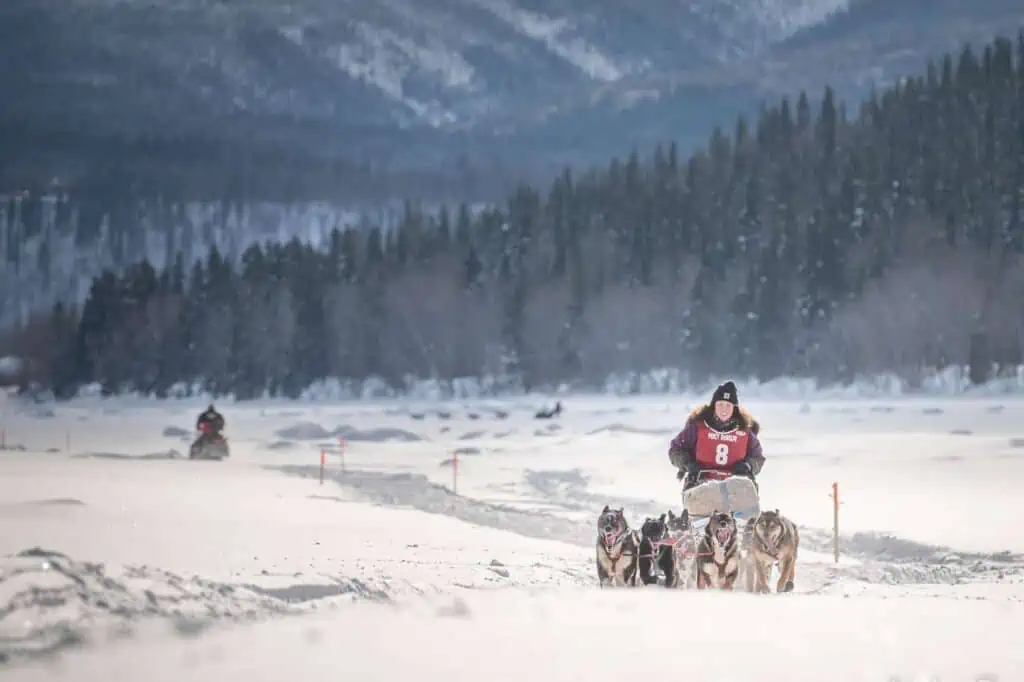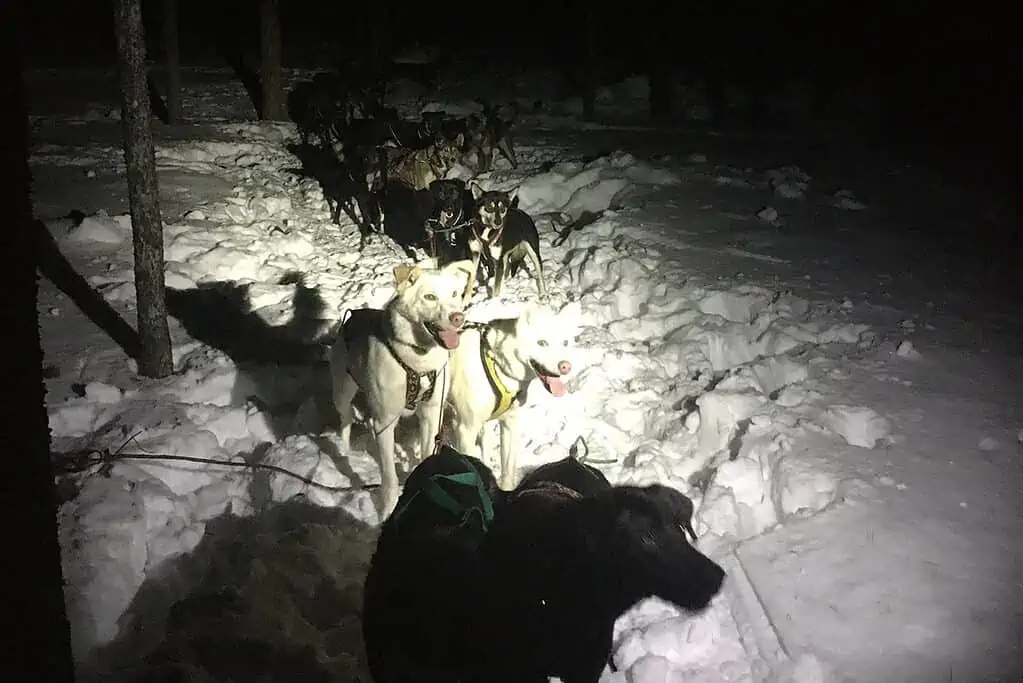A friend gave me a newspaper from Finland a couple weeks ago, and there was a two-page spread on The Yukon Quest. No idea what it said, but it does show how well the race is known around the world. And with the first signs of snow, perhaps it’s time to look at the sport of dog mushing. Snow machines and dog boxes have already appeared in the back of trucks, although I often wonder if this is a status statement since it does seem a bit early.
It also strikes me that there a lot of new people to Yukon who may not know what the race is all about, or why some people love running around the countryside chasing dogs. Even the people who do it sometimes wonder why.
The North was settled by the rivers and by dog teams. This was the main method of transportation and keeping mushing alive today honours the early settlers and the dogs that opened up the North. It was only natural that the competitive side of man, and animals, led to racing— who could go the fastest or the farthest. While the Iditarod grew out of a medical run during an epidemic, the Quest grew mostly out of a night at a bar that got a bit carried away. The first concept of the race had it going all the way to southern California, but once the sun rose, it made more sense to keep it in the North.
There are major differences between the Iditarod and The Quest. Both are approximately 1000 miles. The Iditarod claims to be 1049 miles to recognize Alaska as the 49th state, but with the route changing slightly every year, this is always a close approximation. The Iditarod goes through some very remote and small villages, so the race has northern and southern routes that alternate to take the annual pressure off them. It also has about 22 checkpoints and allows different sleds to be stashed at some of the checkpoints. It means that it is a true race to the finish, with a lot of support along the way.
The Quest, on the other hand, has only six or seven checkpoints, all equipment must be carried, the sled has to be the original one the musher started with and survival and strategy takes on a larger part of the race. I would have to agree that the Quest is a much tougher race and likely is the Toughest Race in the World.
Strategy is a huge part of the race. Having worked both races many times, the strategy is often more important that the speed of the dogs, and how tough the musher is will also play a big part. I watched one musher leaving the starting line for the Percy DeWolfe race in Dawson hit the bumper of a car and rip much of the side of his sled apart. He held it together to get moving and fixed it with wire, twine, shoelaces, and parts of trees along the way. He won the race.
The Quest produced a video many years ago called The Yukon Quest Gamblers. It likened the race to gambling with some of the best poker players in the world. One year, the leader claimed to be very concerned about the guy in second place, so every time he came into a checkpoint, or passed people along the trail, he continually expressed his great concern about the health of his competitor. The poor guy in second place was so rattled he never did catch up.
We always joke that there’s the Truth, Lies, and Quest Rumours. What spectators often don’t see or hear about are the disasters along the way. For example, the musher who went almost 30 miles in the wrong direction; the one who got turned around and raced back to the checkpoint he had already gone through; or the one who forgot his boots at a checkpoint and finished the race in running shoes.
Leaders are very different in each team. A gee-haw (right left) leader will make turns on command. A Trail Leader will feel the harder trail under fresh show and keep you on course. I’ve seen mushers complain they have no leaders, only to have one suddenly move from the back of the string to the front and take over well into the race. My favourite story is the musher who kept commanding his leader to turn right (gee). The dog even looked over his shoulder in confusion. Finally, the leader gave in, and pulled the whole team, musher as well, into the river. He was a trail leader and the musher should have listened to him. It took over 8 hours to dry everything out and get going again.
So much goes into these races that the public often knows nothing about. My first race put me at one of the checkpoints. Every dog has to be examined by a veterinarian at every checkpoint, and any dog that is dropped from the race needs to have a detailing the reason why.
After getting some, to me, bizarre reasons to drop a dog I had a musher ask to drop what seemed to be a very healthy and happy competitor. The reason? Wrong colour. Was this Canine racism?
The next few days were supposed to be bright and sunny. A dark-coloured dog would simply overheat much worse than the light-coloured dogs would. I actually had a case of heat exhaustion at the next checkpoint in another team, at 25 below zero. Her reasoning was sound and she was very gentle with the rookie vet. It wasn’t prejudice. Just very good dog care.




